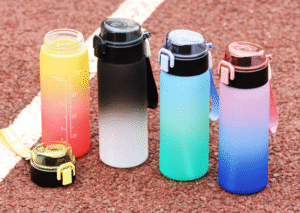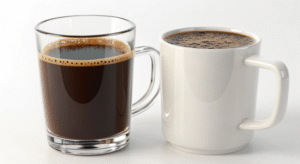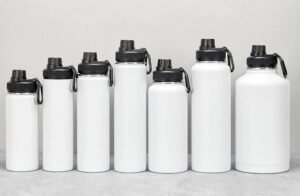You want to launch a winning water bottle in 2025. But with trends changing so fast, how do you know what features customers will actually want next year?
The best bottle in 2025 won't be about one specific brand. It will be defined by user-centric features like innovative multi-function lids, sustainable materials, unique colorways, and a strong brand story that resonates with modern consumers' values.
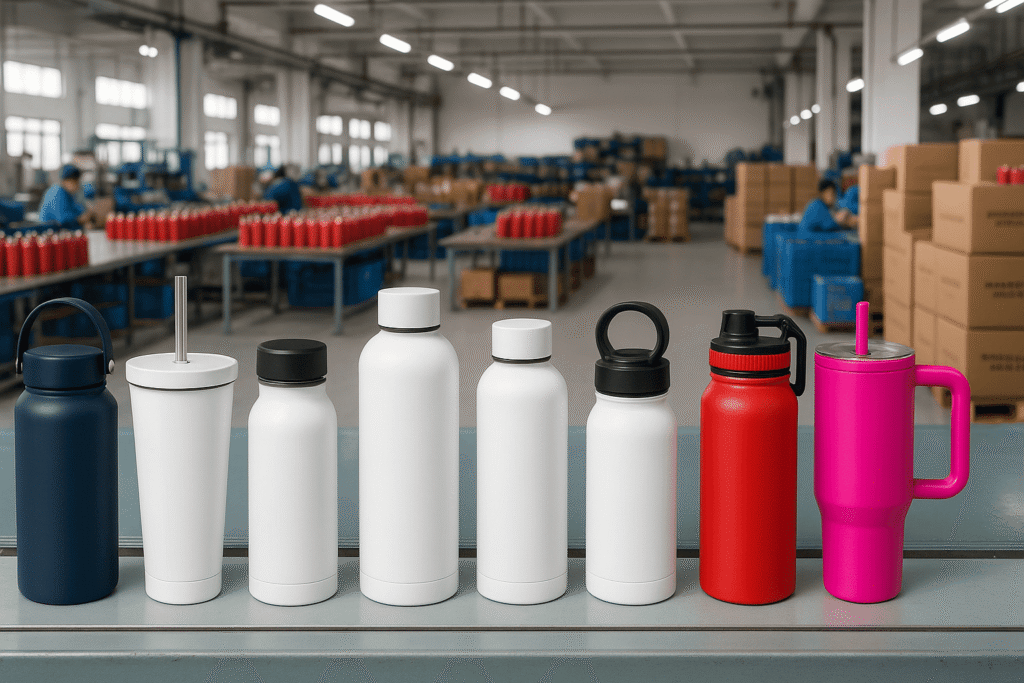
I often tell product developers that success isn't about copying the current bestseller; it's about anticipating what comes next. Looking at the landscape for 2025, it's clear the market is moving past simple insulation. The industry titans have perfected that. The future is about creating a complete user experience. It’s about how the bottle fits into a person's life, what it says about them, and how it solves small, everyday problems. Your next big success will come from focusing on these details.
What is the best stainless steel water bottle on the market?
You see brands like Stanley and Hydro Flask everywhere. You feel pressured to just copy them, but you worry that's not the right move for your brand's unique identity.
There is no single "best" bottle; different bottles excel for different users. The best bottle on the market is the one that perfectly aligns with a specific customer's lifestyle, whether they prioritize a leak-proof lid, maximum durability, or trend-setting aesthetics.
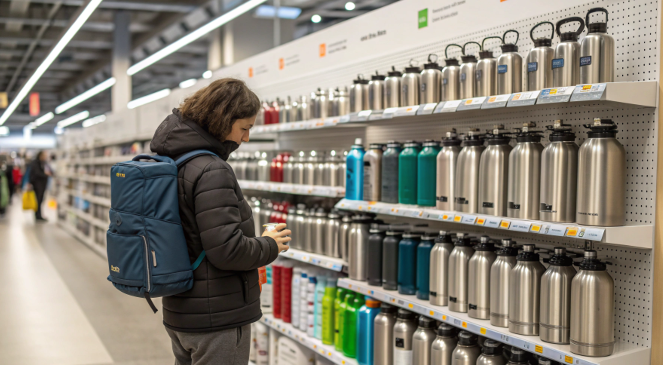
From my experience, trying to be "the best" for everyone is a recipe for failure. You become generic. I advise clients to instead identify a precise customer and be the absolute best for them. A developer like Emily needs to think like a brand strategist. Are you building for the fashion-forward student, the rugged outdoorsman, or the busy professional? Each of them has a different definition of "best." Your job is to pick one and serve them better than anyone else. That's how you build a loyal following and a defensible space in a crowded market.
Defining "Best" by User Segment
Instead of a single winner, the market is defined by different archetypes that serve different needs. Understanding these archetypes is key to positioning your own product.
| Archetype | Example Brand | Key Feature | Primary Goal for the User |
|---|---|---|---|
| The Trend-Setter | Stanley Quencher | Style, Huge Capacity, Handle | A Fashion Accessory, Status Symbol |
| The Reliable Performer | Hydro Flask | Proven Insulation, Durability | A Dependable Tool for Life |
| The User-Centric Innovator | Owala FreeSip | A Multi-Function Lid | Solving an Everyday Problem |
To compete in 2025, you don't need to out-Stanley Stanley. You need to identify a gap. For example, the Trend-Setter bottles are often not leak-proof, and the Performers can feel a bit plain. The Innovators prove that a single, smart feature can create a new category. The opportunity for a new brand lies in combining these strengths: create a bottle with the functional innovation of Owala, the reliable quality of Hydro Flask, and the aesthetic appeal of a Stanley. That is how you create the next "best" bottle.
What is the best water bottle for hiking in 2025?
You're designing a bottle for the demanding outdoor market. You know hikers value function over everything, and the wrong feature could lead to a failed product and bad online reviews.
The best hiking bottle for 2025 will be lightweight yet durable, with a secure, 100% leak-proof cap that includes an easy-carry handle or loop for attaching to a pack. Prioritizing strength and real-world function over trendy aesthetics is absolutely critical.
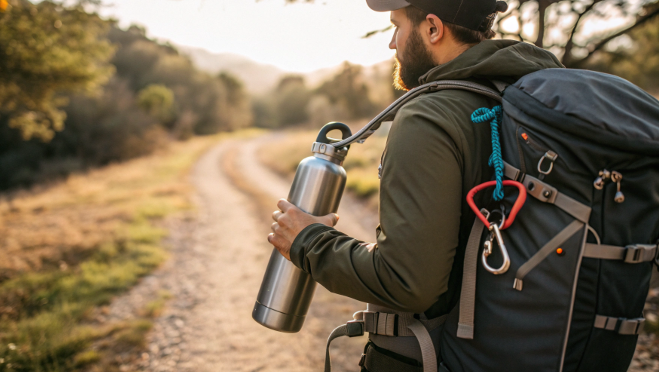
I've worked on developing products for outdoor brands, and the feedback from field testers is ruthless. A bottle for hiking is not a fashion accessory; it is a piece of survival equipment. It cannot leak inside a pack with electronics and warm gear. It must be easy to carry when your hands are full. And it has to withstand being dropped on a rock. When I guide developers for this market, I tell them to forget everything about the current social media trends. Go back to basics. Talk to real hikers. The insights you gain from them are more valuable than a thousand TikTok videos.
Essential Features for the Trail
For a developer like Emily, designing for the trail means a different set of priorities. The focus shifts from aesthetics to pure, rugged performance.
- The Weight vs. Durability Trade-Off: This is the primary challenge. Standard double-wall insulated bottles are great for keeping water cold but can be heavy. Single-wall bottles are much lighter but offer no insulation. For 2025, a key area for innovation is a lightweight double-wall construction that offers a compromise.
- The Cap is Everything: A hiker's cap needs three things. First, it must be completely leak-proof. A simple, robust screw-on lid is often the most reliable. Second, it needs an integrated loop or handle. This is non-negotiable for clipping it to a carabiner or carrying it easily. Third, it should be easy to open with gloves or cold hands.
- Material and Finish: The bottle must be made from high-quality 18/8 food-grade stainless steel. The exterior should have a durable powder coat. This finish not only protects against scratches but also provides essential grip in wet conditions.
- Shape and Capacity: The bottle must have a slim enough profile to fit into the side pockets of most hiking backpacks. A capacity between 32oz and 40oz (around 1 to 1.2 liters) is the sweet spot for most day hikes.
How often should you buy a new stainless steel water bottle?
You see consumers constantly buying new bottles. You wonder if this is driven by real need or just consumerism, and how that impacts your brand's sustainability message.
A high-quality stainless steel water bottle should last for many years. You only truly need to replace it if the vacuum seal is broken, if it's so damaged it becomes unstable or unusable, or if it cannot be cleaned properly.
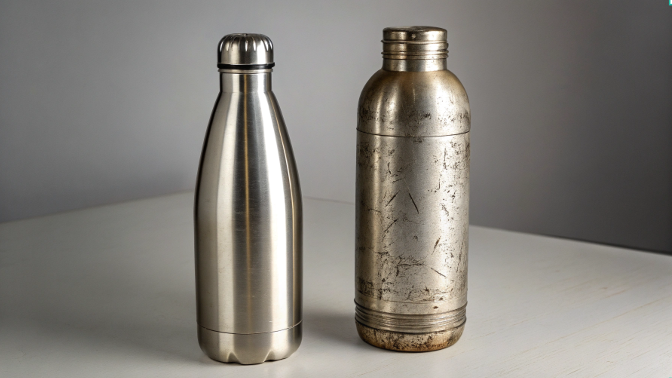
This is a dilemma for every brand in the reusable space. Your mission is to reduce waste, but your business model relies on selling products. I believe the most successful brands of the future will resolve this conflict with integrity. The key is to shift the focus from selling new bottles to selling a brand ecosystem. Build a bottle that lasts a lifetime but offer new lids, protective boots, and custom accessories that allow customers to refresh and personalize their product without replacing it entirely. This builds long-term loyalty and reinforces a genuine commitment to sustainability.
Balancing Durability with Desirability
As a brand, you should build your product to last, but you must also understand the real reasons customers choose to buy new ones.
- Loss of Performance: The most legitimate reason to replace an insulated bottle is a broken vacuum seal.
- How to tell: Fill the bottle with hot water. If you can feel the heat on the outside of the bottle within a few minutes, the vacuum is gone, and it will no longer insulate.
- Hygiene Concerns: This is a major driver of replacement purchases. If the lid has hidden crevices that grow mold, or if the gaskets get lost or stretched, customers will often buy a whole new bottle.
- The Developer's Opportunity: Design for disassembly. Make every single part of the lid easy to take apart and clean. Offer affordable replacement gaskets and lids on your website. This is a huge trust-builder.
- The Fashion Cycle: This is the most powerful force. Limited-edition colors, new collaborations, and updated models create powerful desire. The water bottle has become a fashion item. A smart brand embraces this by releasing new colorways seasonally, turning a durable product into a collectible item without sacrificing its core message of reusability.
Why is Owala so popular?
Owala seemed to appear out of nowhere and challenge the biggest brands. You want to understand the secret to their explosive growth so you can apply those lessons to your own products.
Owala's popularity stems directly from its innovative FreeSip lid, which solved a real user problem by combining a straw and a wide-mouth opening. This core feature, combined with playful colors and smart marketing, created a viral sensation.
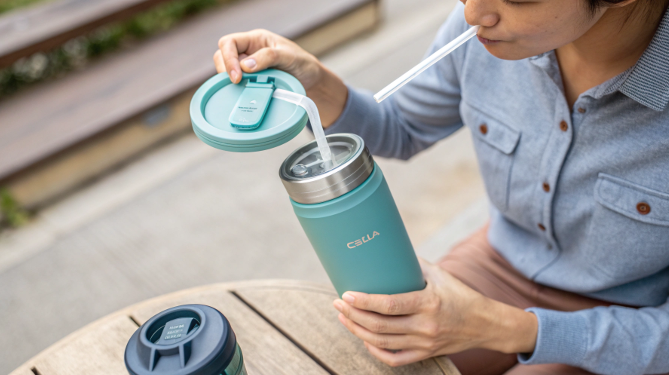
I analyze successful products for a living, and Owala is a perfect case study in modern product development. They didn't just make another insulated bottle. They watched how people actually used bottles and identified a point of frustration. People often have a preference for sipping from a straw or chugging from an opening, but sometimes they want both. Owala's genius was in creating a lid that did both things perfectly. It seems simple now, but that single, user-focused innovation was the engine for their entire success.
The Owala Playbook: A Case Study
For a product developer, Owala provides a clear roadmap for how to disrupt an established market.
- 1. Start with a Real Problem: The FreeSip lid is the hero of the brand. It addresses the user's desire for choice and optionality in one simple, elegant solution. It wasn't a gimmick; it was a genuine improvement to the user experience. Lesson: Invest in R&D that solves a tangible problem.
- 2. A Bold and Playful Color Strategy: Owala's use of three-tone color combinations with fun, creative names set them apart instantly. While other brands were focused on solid, earthy tones, Owala made their bottles look like candy. This made them feel fun, fresh, collectible, and perfect for social media. Lesson: Don't underestimate the power of a unique color and naming strategy.
- 3. Authentic Digital Marketing: They built their brand on platforms like TikTok, relying on user-generated content and authentic reviews. Their brand voice is fun, self-aware, and doesn't take itself too seriously, which resonates perfectly with a Gen Z audience. Lesson: Match your marketing channel and voice to your target customer.
- 4. Smart Retail Accessibility: By securing distribution in major retailers like Target early on, they made their product highly visible and accessible to the mainstream consumer, moving beyond the niche online market. Lesson: An online strategy must be paired with a strong retail plan for mass-market success.
Conclusion
The best bottles of 2025 will blend user-focused innovation with a compelling brand story. Success hinges on knowing your customer and solving their problems with quality, style, and authenticity.

